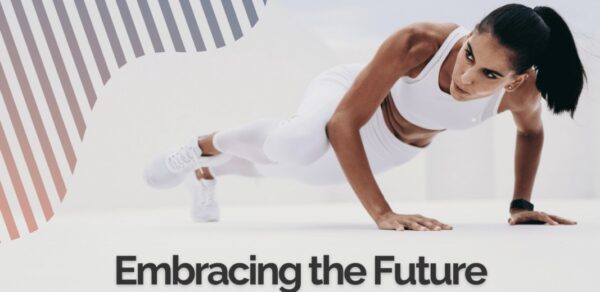In a world that is constantly evolving, so too are our approaches to fitness. Virtual workouts have emerged as a dynamic force, steadily gaining popularity in recent years, and all signs point to this trend continuing to thrive in 2024. The allure of virtual workouts lies in their convenience, affordability, and personalized nature, offering a revolutionary way to stay fit without the constraints of a traditional gym setting.
Convenience Redefined
One of the primary draws of virtual workouts is the unparalleled convenience they offer. No longer bound by the constraints of time or location, fitness enthusiasts can engage in effective workouts from the comfort of their homes or any location that suits them. The flexibility of virtual workouts caters to busy schedules, making it easier for individuals to seamlessly integrate exercise into their daily routines.
Affordability at its Core
The financial barriers that often accompany traditional gym memberships become a thing of the past with virtual workouts. The affordability of these programs makes fitness accessible to a broader demographic, leveling the playing field and empowering individuals from various walks of life to prioritize their health and well-being without breaking the bank.
Tailored to Individual Needs
Virtual workouts stand out for their ability to be customized to individual needs and preferences. Whether you’re a seasoned fitness enthusiast or a beginner taking your first steps on the wellness journey, virtual workouts provide a diverse range of programs that cater to different fitness levels, goals, and preferences. The ability to tailor workouts ensures that each session is not just effective but also enjoyable, enhancing the overall fitness experience.
The Future of Fitness in 2024
As we look ahead to 2024, the trajectory of virtual workouts appears poised for continued growth and innovation. Technological advancements, coupled with an increasing emphasis on personalized fitness experiences, will likely shape the future of virtual workouts. From interactive live sessions to immersive virtual reality workouts, the possibilities are vast, promising an exciting evolution in how we approach fitness.
Conclusion
Virtual workouts have undeniably become a cornerstone of the modern fitness landscape. With their unmatched convenience, affordability, and personalized approach, they have transformed the way we view and engage in exercise. As we step into 2024, the virtual fitness revolution shows no signs of slowing down, offering a fitness frontier that is inclusive, adaptable, and tailored to the unique needs of each individual.
In this era of virtual fitness, the Optimized Humans Fitness App stands out as a beacon of personalized training excellence. The app, coupled with expert trainers, seamlessly integrates the benefits of virtual workouts with a personalized touch. Through a diverse array of customizable programs, interactive live sessions, and real-time guidance from experienced trainers, the Optimized Humans Fitness App ensures that your fitness journey is not just virtual but uniquely yours. It’s the perfect answer to the evolving landscape of virtual training, where technology and personalization converge to deliver an unparalleled fitness experience. Embrace the future of fitness with the Optimized Humans Fitness App—an innovative solution that brings the gym to you, tailoring workouts to your individual needs and goals, making fitness both effective and enjoyable.
As we embark on the journey through 2024, one fitness trend stands tall, promising not just to endure but to thrive—strength training. While it has long been a staple in the realm of fitness, the projections for 2024 suggest a surge in its popularity. What propels this enduring fascination with lifting weights and resistance training, and why is strength training expected to claim an even more prominent spot in the fitness landscape this year?
The Unyielding Appeal of Strength
Strength training isn’t merely a passing fad; it’s a timeless pursuit grounded in the fundamental desire for vitality and resilience. The anticipation for its heightened popularity in 2024 prompts a contemplation: Is it the simplicity and efficacy of lifting weights that draws individuals in, or is there something deeper, something inherently satisfying about witnessing one’s physical strength evolve?
Beyond Muscles: The Holistic Benefits
The growing recognition of strength training’s myriad benefits contributes to its rising acclaim. It’s not just about sculpting muscles; it’s about enhancing overall health. Improved bone density, increased muscle mass, and better cardiovascular health are outcomes that resonate with a generation increasingly mindful of holistic well-being. The question arises: In a fitness landscape teeming with options, does strength training stand out as a foundational practice that transcends trends?
Versatility in Wellness
Strength training’s adaptability to various fitness goals further cements its relevance. Whether one’s aim is to lose weight, boost metabolism, or foster a resilient physique, strength training accommodates diverse aspirations. In an era where individuality in fitness pursuits is celebrated, the question lingers: Is strength training the common ground that unites the pursuit of varied wellness goals?
The Future of Fitness
As we delve into the heart of 2024, the resurgence of interest in strength training prompts contemplation about the future of fitness. Is this a reaffirmation of the timeless effectiveness of resistance training, or does it signal a deeper shift in our approach to physical well-being? Could it be that, in an age marked by technological advancements and ever-evolving fitness modalities, the simplicity and efficacy of strength training offer a grounding force that individuals seek?
Strength training, with its roots reaching back through the annals of fitness history, continues to captivate and evolve. The buzz surrounding its anticipated surge in popularity in 2024 invites us to reflect on the enduring appeal of lifting weights and the profound impact it has on our bodies, minds, and the very essence of our fitness journeys. As we navigate this year, one question resonates: Is strength training not just a trend but a steadfast companion in our pursuit of enduring health and vitality? Time will tell, and in the meantime, let the clink of weights be the soundtrack to a resilient and empowered year of fitness.
New Years Discount by Optimized Humans
To further ignite your fitness journey, Optimized Humans is offering an unprecedented 40% discount throughout the month of January. This exclusive offer ensures that you have access to top-notch coaching, personalized programs, and the revolutionary features of the app, all at an unbeatable value.
As of January 5, 2023 the CDC.gov announced 11.1 percent of U.S. adults have a mobility disability with serious difficulty walking or climbing stairs. 10.9 percent of U.S. adults have a cognition disability with serious difficulty concentrating, remembering or making decisions.
Mobility issues can encompass a wide range of conditions and causes, according to the World Health Organization (WHO), globally, an estimated 2.2 million people die each year as a result of physical inactivity, which can be a contributing factor for anyone with mobility issues.
In addition, falls are a common cause of injury and death among older adults, who may have mobility issues due to age-related conditions such as arthritis or osteoporosis. According to the WHO, falls are the second leading cause of unintentional injury-related deaths worldwide, with an estimated 646,000 deaths annually. So you can see statically immobility is an actual issue in adults and this process starts in our 30’s! The same time most of our hormones start to decline as well…but there is something we can do about it.
What is it?
Optimal Mobility allows you to take part in the activities that matter to you, without limitations. Most of us spend a sizeable chunk of the day sitting.
Think about it like this – you want to be able to climb up stairs, play with your grandkids, and maybe even bust a move on the dance floor without feeling restricted or uncomfortable.
Having optimal mobility means you can do all of these things and more, without any pain or discomfort. It’s like having a superpower that lets you do all the fun stuff you love, without any limitations. Over time, the body will take away any range of motion it doesn’t deem necessary. It’s the classic case of use it or lose it.
So, whether you’re looking to improve your flexibility, strength, or balance, there are plenty of ways to boost your mobility and keep your body feeling young and spry. Just remember to take care of yourself, stay active, and don’t be afraid to try new things. Who knows, you might just discover a new passion for salsa dancing or rock climbing along the way!
Why is it important?
Having limited mobility means that you’re not getting your joints in the optimal positions to create and absorb force. You’re not building strength as efficiently as you could. You’re forcing the joints to deal with stress in positions that you cannot get into without a compromise. And more likely than not restricting your ability to breathe at capacity.
Performance goes down, and the risk of injury goes up. Not only in sports, but also in day to day life. But, you may ask what is the actual risk for mobility decline?
How to get it?
Mobility is the basic functionality of movement. In our day to day family life, work life and moments of enjoyment we build up resilience to the need of stretching. Our bodies take the toll day in, day out without complaining until our bodies starts to tighten, ligaments become worn down until they just give out and affect numerous parts of the body.
Optimal Mobility is about decreasing your risk of injury and to perform at your highest level with confidence. Whether you’re playing with your kids or grandkids, going for a bike ride, surfing, or chasing your personal best in a marathon or tying your shoelaces. Optimal Mobility is the idea that you continue to work with your body in creating day to day routines that will allow you to age with flexibility, comfort and less issues in the back or knees.
How to keep it!
Optimal mobility is important for maintaining independence, reducing the risk of falls and injury, and improving overall quality of life. It also allows you to take part in the activities that matter to you, without limitations. It’s about decreasing your risk of injury and to perform at your highest level with confidence.
Having limited mobility means that you’re not getting your joints in the optimal positions to create and absorb force. Performance goes down, and the risk of injury goes up.
Optimized Humans app mobility standards are the foundation for a well functioning, optimized human.
Here are some tips and exercises to help you retain optimal mobility:
- Stay Active: Engaging in regular physical activity is key to maintaining optimal mobility. Exercise helps to improve strength, flexibility, and balance, all of which are important for mobility. Aim to get at least 30 minutes of moderate exercise, such as walking, swimming, or cycling, most days of the week.
- Stretching: Regular stretching can help improve flexibility and range of motion, reducing the risk of injury and improving mobility. Focus on stretching major muscle groups such as the hamstrings, quadriceps, and calves. Hold each stretch for 20-30 seconds and repeat on both sides.
- Strength Training: Strength training can help to improve muscle mass and strength, which is important for mobility. Focus on exercises that target major muscle groups such as the legs, back, and chest. Use resistance bands or weights to challenge yourself and gradually increase the weight or resistance over time.
- Balance Exercises: Improving balance is important for preventing falls and improving mobility. Examples of balance exercises include standing on one leg, heel-to-toe walking, and yoga.
- Cardiovascular Exercise: Aerobic exercise such as walking, cycling, or swimming can help to improve cardiovascular health and endurance, which is important for maintaining mobility.
- Posture Correction: Poor posture can lead to back pain and mobility issues. Focus on maintaining good posture throughout the day, especially when sitting or standing for extended periods.
Remember to always consult with a healthcare professional before starting any new exercise program. A physical therapist can also help you develop a personalized exercise program tailored to your individual needs and goals.
Can we help you?
Are you or someone you know struggling with mobility issues? Do you want to improve your physical health and fitness but don’t know where to start? Look no further than our team of health and fitness experts!
Our team understands the unique challenges that come with mobility issues, whether it be due to age, injury, or chronic conditions. We are committed to helping you overcome these challenges and achieve your health and fitness goals.
Working with us, you’ll receive personalized guidance and support every step of the way. We’ll work with you to develop a customized fitness plan that meets your unique needs and abilities. Our team will also provide education on proper form and technique to ensure you are exercising safely and effectively.
But we don’t just focus on exercise. Our team takes a holistic approach to health and wellness, addressing factors such as nutrition and stress management that can impact your overall well-being.
With our expertise and guidance, you’ll not only improve your mobility and physical health, but you’ll also boost your confidence and quality of life. Don’t let mobility issues hold you back any longer. Contact us today to start your journey to a healthier, happier you!
Here are the best animal- and plant-based foods you can enjoy after your workout to help you achieve your muscle-building goals. Since protein-rich foods contain the most amino acids, the building blocks of muscle tissue, the focus on the healthiest foods with the highest protein per 100-gram (3.5 ounce) serving. Many of them also contain heart-healthy fatty acids, digestion-supporting complex carbohydrates, and micronutrients such as zinc and magnesium.


